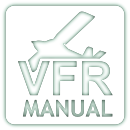4.Procedures for SSR transponder setting
4.1Procedures for pilots
An aircraft equipped with the SSR transponder shall operate the transponder during the flight. The SSR transponder shall reply to mode A and C interrogations.
Except for flights using special purpose codes, the pilot who is or intends to be receiving ATS, selects A2000 in the absence of other instructions related to code setting from ATS unit.
Note: The setting concerned is assumed for flights, e.g. entering a CTR, departing from aerodromes in CTR or AFIS aerodromes, combined VFR/IFR flights, flights receiving ATS from FIC etc.
The unit may also assign the code A2000 to the aircraft if there is no reason to assign a discrete code or another special purpose code.
When a VFR flight pilot decides not to make use of the ATS from any ATS unit within the airspace, where is no more a subject to an ATC clearance (class G and E), changes the transponder setting to A7000.
The ATS unit may also assign the code A7000 to the aircraft if the information from the pilot about his intention not to make use of the ATS in the airspace concerned has been received.
Note 1: A one-time information provision to an uncontrolled flight when the pilot terminates the connection afterwards, typically with the FIC, does not constitute a reason for the change or for an instruction to change the code A7000, if the aircraft has it selected.
Note 2: The responsibility of the pilot-in-command arising from the ALRS provision requirements remains untouched (see VFR-ENR 2.3.6).
The SSR code assigned by ATS unit shall be maintained by the aircraft until termination of the flight or until the instruction of ATS unit is given to change the code or to switch off the transponder.
Pilots of aircraft equipped with Mode S having an aircraft identification feature shall set the aircraft identification in the transponder.
If FPL has been submitted, transponder setting shall exactly correspond to the aircraft identification specified in item 7 of the FPL.
If FPL has not been submitted, the setting shall correspond to the aircraft registration marking (e.g. OKABC or OKUUA14).
4.1.1Codes for special purposes
In case emergency set Code 7700
In case of radiocommunication failure set Code 7600
Note: Radio communication failure (RCF) is considered a state when during the VFR flight within controlled airspace of class C or D, the pilot despite all attempts failed to establish a communication with ATC unit.
In case of unlawful interference set Code 7500
4.2Equipment of aircraft conducting VFR flights by SSR transponder
4.2.1Equipment of Aircraft by SSR Mode S Transponder with Elementary Surveillance functionality (ELS)
The carriage and operation of Mode S level 2 transponders with ELS functionality is mandatory for VFR flights:
- within FIR Praha above FL 95 and
- within TMA Praha and CTR Ruzyně.
4.2.2Equipment of Aircraft by SSR Transponder with a Mode A and C
VFR flights operating outside the Mode S designated airspace, as described above shall be equipped with SSR transponder capable to reply to Mode A interrogations with Mode C pressure-altitude reporting as follows:
- all powered aircraft and balloons operating VFR flights at or above FL 60, or altitude at or above 5000 ft (1500 m) AMSL, if transition level is FL 70,
- all aircraft operating VFR en-route flight at night.
4.2.3Exemptions from the equipage requirement
Potential granting of an exemption from the requirement to carry SSR Mode S transponder is described in AIP CR, subsection GEN 1.5
An exemption from mandatory carriage of SSR Mode A/C transponder can be approved by respective ATC unit with regards to traffic situation on crew’s request prior to entering its area of responsibility.




 PDF/Print
PDF/Print